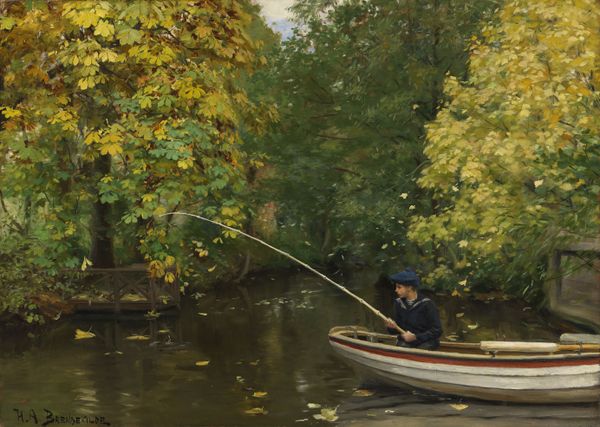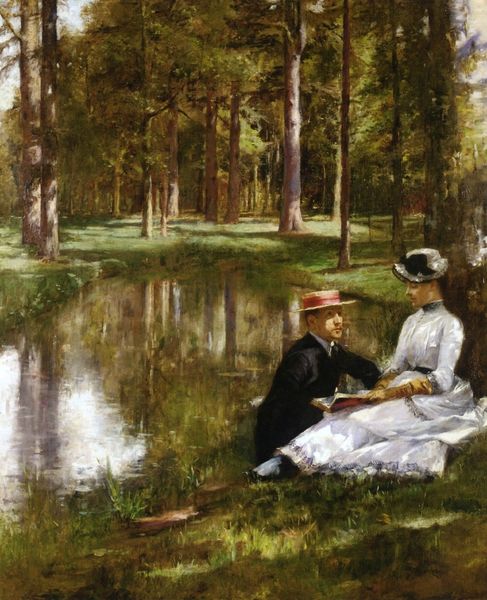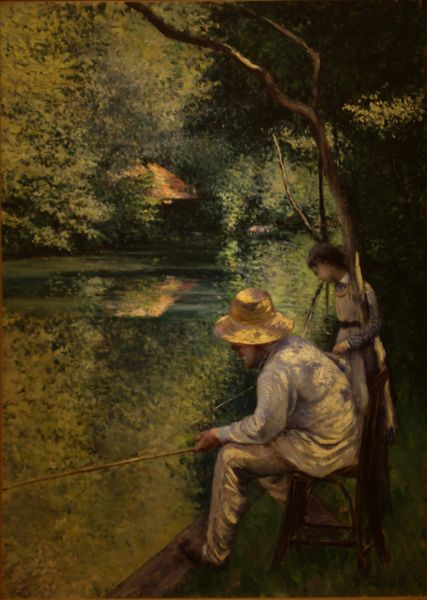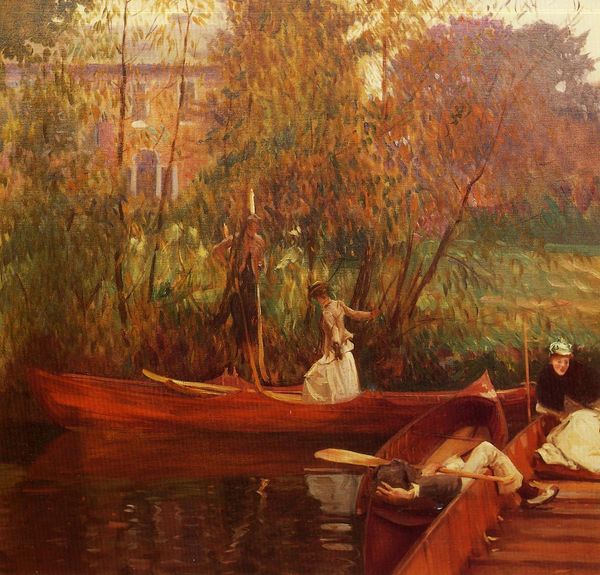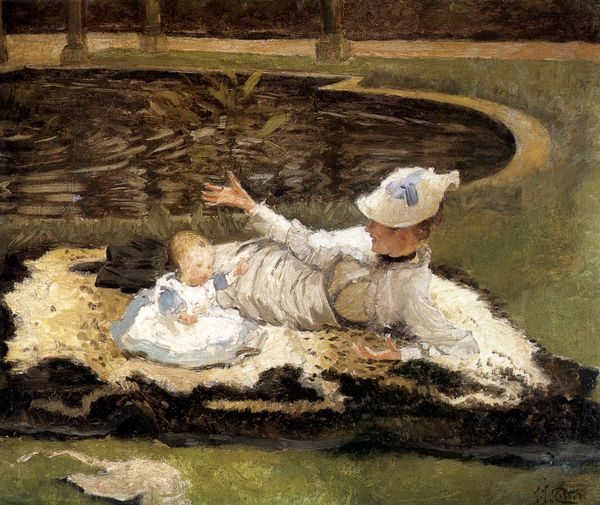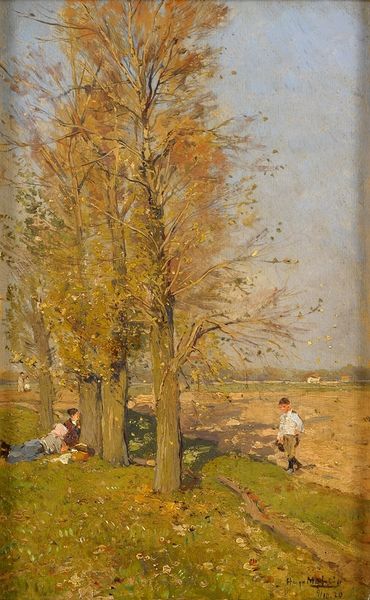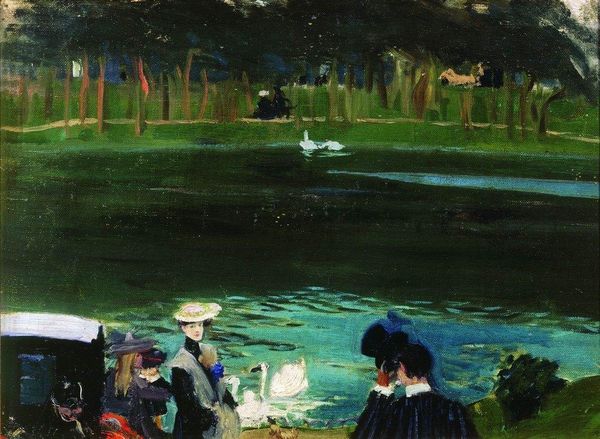
Copyright: Public domain
Editor: Here we have James Tissot's "Autumn on the Thames," created in 1872 using oil paints. It strikes me as a snapshot of a leisurely afternoon, but the color palette is quite muted, creating a rather melancholic mood. What visual elements stand out to you? Curator: The most immediate formal concern is the artist's construction of depth. Note how Tissot employs atmospheric perspective to create a receding plane; the background blurs subtly, causing a noticeable visual compression in the composition. Do you see how that contrasts with the sharp delineation of figures in the foreground? Editor: I do. It almost feels like two separate planes stitched together. Is that intentional? Curator: Precisely. Tissot’s intention, I posit, is to draw our attention to the act of seeing itself. The crisp figures mediate our experience; observe the standing woman using binoculars. This begs us to question our own position as viewers, complicating the idea of simple observation. How does that resonate with you? Editor: It's fascinating. I was so focused on the narrative I almost missed that. So the formal elements work together to draw us in, not just to depict a scene, but to engage us in a dialogue about perception. Curator: Exactly. By carefully orchestrating these formal devices, Tissot moves beyond mere representation, prompting us to question the very nature of our visual experience. Editor: This painting suddenly feels much deeper! I will now certainly view Tissot's piece from a very different perspective.
Comments
No comments
Be the first to comment and join the conversation on the ultimate creative platform.
